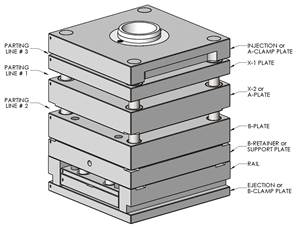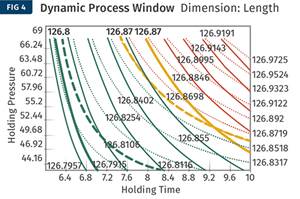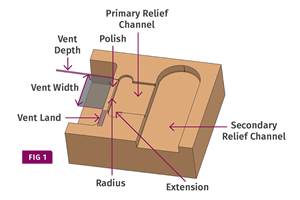New 3D Printer Looks To Compete With Injection Molding
The new machines are expected to enter the market starting in 2017.
Is 3D printing a viable alternative to injection molding? Well, the University of Sheffield (South Yorkshire, England) believes the answer is yes—and they hope to be the ones to achieve it. The university plans to build a machine that will produce parts up to three times larger and 100 times faster than current comparable additive manufacturing (AM) machines. The university says this makes it capable of challenging conventional injection molding for high volume production.
The £1million ($1.1 million) project is funded by the Engineering and Physical Sciences Research Council and touted as holding the potential to transform both manufacture and distribution. Low-cost, high volume additive manufacturing would enable parts to be made where they are needed, rather than produced centrally.
“Additive manufacturing is already being used to make tens of thousands of a product – such as iPhone covers – and ten years ago that volume was unthinkable,” said Neil Hopkinson from the University of Sheffield’s Faculty of Engineering. “This machine will enable serious production of volumes over one million, which is currently inconceivable. I believe history will repeat itself and in ten years’ time, producing volumes over a million using additive manufacturing will be commonplace.”
The machine is based on a technology developed by Hopkinson, who originally filed patents on the process as lead inventor at Loughborough University. The technology for HSS is being licensed to industrial machine manufacturers on a non-exclusive basis. The new machines are expected to enter the market starting in 2017.
The process, called high speed sintering (HSS), selectively fuses polymer powder layer by layer, similar to other AM processes. However, instead of using lasers, HSS prints infra-red-absorbing ink onto a powder bed. Once a layer has been printed, it is exposed to infra-red light, which heats the powder covered by the ink, causing it to fuse, while the rest of the powder remains cool.
The new machine will be able to make parts up to about the size of the washing machine. The speed will depend on the size of the product, but the team estimate that small components will be built at a rate of less than one second per part, allowing AM to compete with injection molding for high volume manufacturing.
“With additive manufacturing, you can make more complex parts and make each part unique,” Hopkinson says. “You can also make the parts where they are needed, which reduces transport costs. Additive manufacture also limits the risks involved. With injection molding, you have to make tools, which is expensive and has to be done in advance. With AM, you miss out that stage, moving straight from design to manufacture.”
The machine will initially be built in the University of Sheffield’s Advanced Manufacturing Research Centre (AMRC) before installation in the University’s Centre for Advanced Additive Manufacturing (AdAM), of which Hopkinson is Director.
“This machine will be built completely from scratch, drawing on all the skills and expertise of our design engineers,” Andy Bell, from the AMRC’s Design Prototype and Test Centre (DPTC). “We have been involved in developing machines with commercial partners in the past, but this will be the biggest machine we have ever created.”
Related Content
How to Design Three-Plate Molds, Part 1
There are many things to consider, and paying attention to the details can help avoid machine downtime and higher maintenance costs, and keep the customer happy.
Read MoreOptimizing Pack & Hold Times for Hot-Runner & Valve-Gated Molds
Using scientific procedures will help you put an end to all that time-consuming trial and error. Part 1 of 2.
Read MoreBack to Basics on Mold Venting (Part 2: Shape, Dimensions, Details)
Here’s how to get the most out of your stationary mold vents.
Read MoreUsing Data to Pinpoint Cosmetic Defect Causes in Injection Molded Parts
Taking a step back and identifying the root cause of a cosmetic flaw can help molders focus on what corrective actions need to be taken.
Read MoreRead Next
See Recyclers Close the Loop on Trade Show Production Scrap at NPE2024
A collaboration between show organizer PLASTICS, recycler CPR and size reduction experts WEIMA and Conair recovered and recycled all production scrap at NPE2024.
Read MoreLead the Conversation, Change the Conversation
Coverage of single-use plastics can be both misleading and demoralizing. Here are 10 tips for changing the perception of the plastics industry at your company and in your community.
Read More










